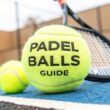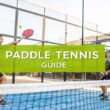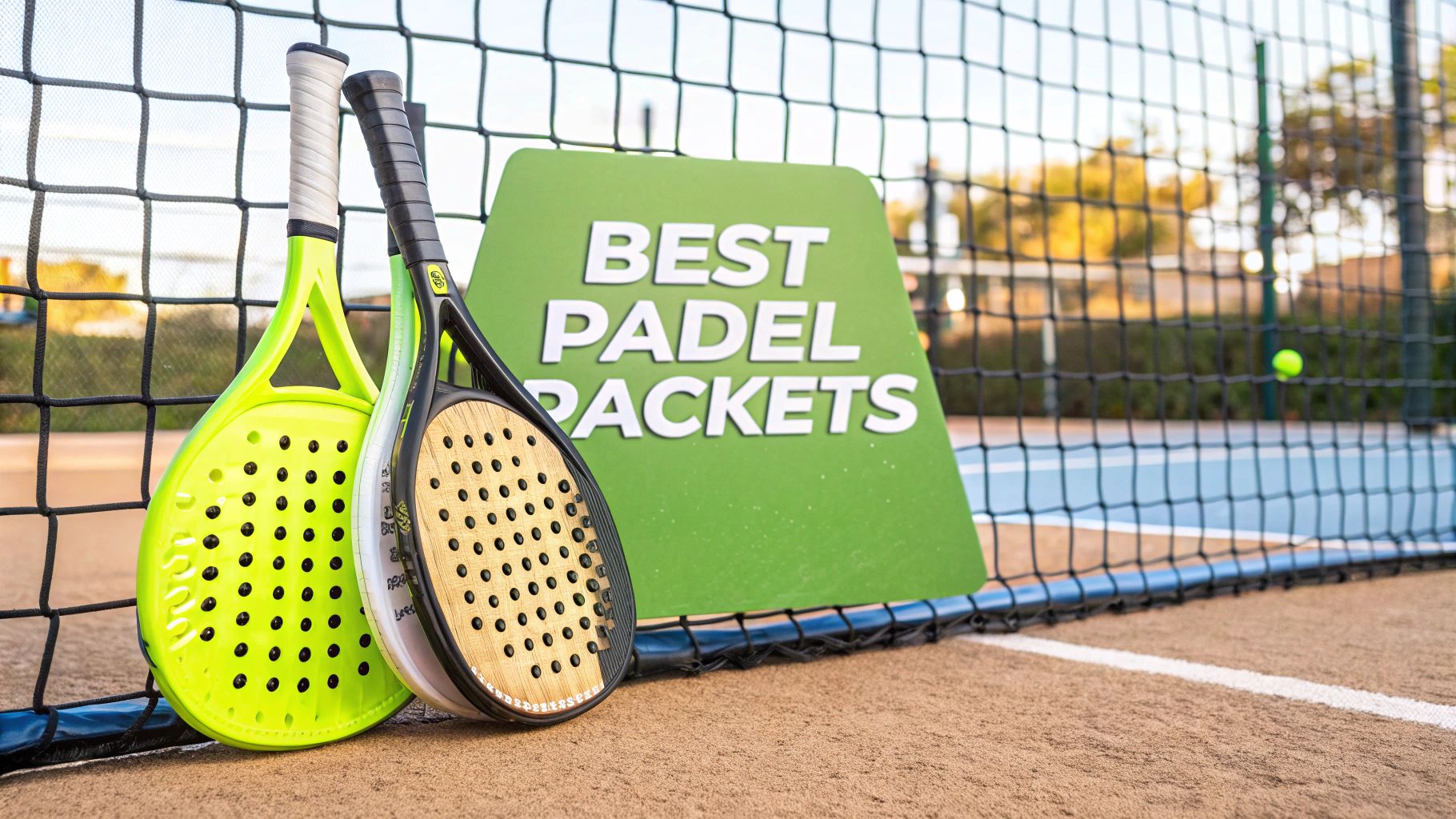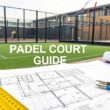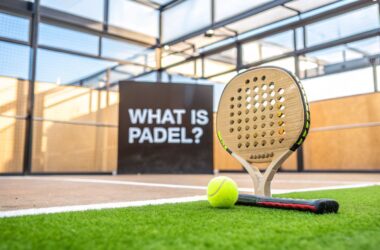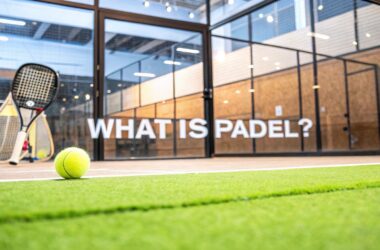So, you're stepping onto the padel court for the first time. It's an exciting feeling, but staring at a wall of rackets can feel a bit much. Don't worry, the choice is actually pretty straightforward for beginners: your main goals are control and comfort.
The best racket for you isn't the one with the most power or the flashiest design. It's the one that helps you build a solid foundation, making the learning process fun and keeping you injury-free.
How to Choose Your First Padel Racket
Getting the right gear from the start will genuinely speed up your progress. Think of your first racket as a learning tool. It should have a round shape for a forgiving sweet spot, a light weight for easy swings, and a soft core to feel comfortable at impact. This setup helps you learn the proper technique without putting unnecessary strain on your arm.
Let's break down exactly what to look for.
The Beginner Racket Triangle
Three core elements really define the best padel rackets for new players. Getting these right is more important than anything else.
-
Shape for Forgiveness: A round racket is your best friend. Its sweet spot—the ideal area for hitting the ball—is large and centered. This means that even your off-center hits will still feel pretty good and go where you want them to. It’s the most forgiving design, period.
-
Weight for Maneuverability: Look for a racket in the 350-370 gram range. Lighter rackets are just easier to handle, especially when you're up at the net and need to react quickly. A lighter weight also means less stress on your elbow and shoulder while your muscles get used to the game.
-
Material for Comfort: Most beginner rackets have a fiberglass face. It’s not as powerful as carbon fiber, but it's much softer and more flexible. This gives you great "ball output" (the ball pings off the face easily) and dampens vibrations for a much more comfortable feel. You can explore the different padel racket types in our detailed guide.
For beginners, the goal isn't to blast winners. It's to consistently get the ball over the net and keep rallies going. A forgiving, comfortable racket is your greatest ally in doing just that.
You're not alone in looking for user-friendly gear. The global padel racket market was recently valued at around USD 130.9 million, and a huge part of that growth comes from new players just like you. You can discover more insights about this growing market if you're curious about the industry trends.
Quick Guide to Beginner Racket Features
To make things even clearer, here’s a simple table summarizing the key features every beginner should look for in their first padel racket. Sticking to these recommendations will give you the best possible start in the sport.
| Feature | Recommended for Beginners | Primary Benefit |
|---|---|---|
| Shape | Round | Maximum control and a large sweet spot |
| Weight | 350-370 grams | Easy handling and injury prevention |
| Face Material | Fiberglass | Comfort and excellent ball output |
Ultimately, a racket with these specs is designed to work with you, not against you, as you develop your skills and learn to love the game.
Why Racket Shape Is Everything for Control
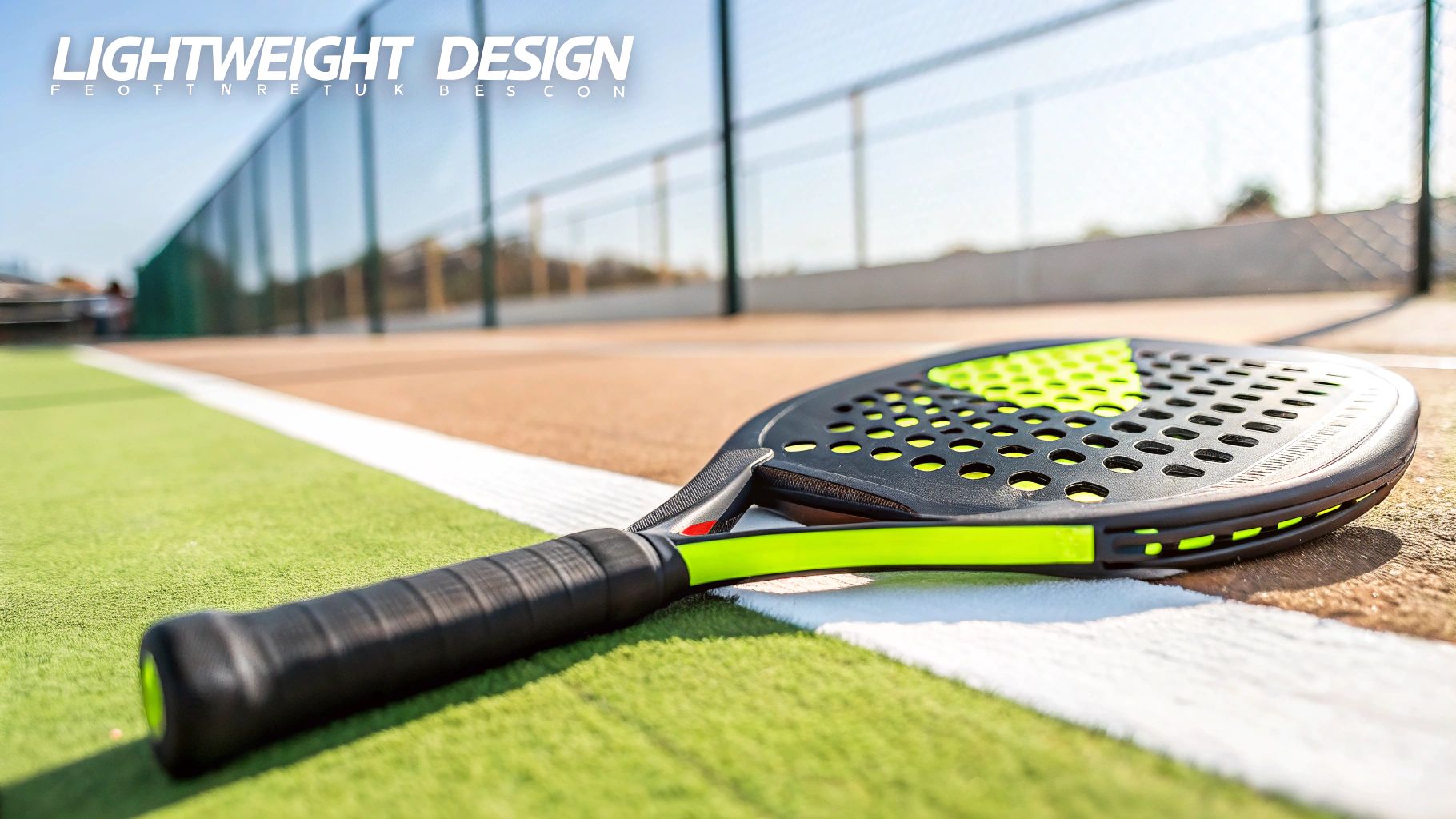
When you’re trying to find the best padel racket to start with, nothing matters more than its shape. You’ll see three main types out there: round, teardrop, and diamond. Each one completely changes the racket’s feel and performance, and that directly affects how well you can control the ball.
For anyone just getting into padel, the answer is clear: start with a round racket. It's not just a recommendation; it's the smart play. This shape is engineered specifically for control and forgiveness—two things you desperately need when you're still getting the hang of your swing. The physics behind it are simple but incredibly effective.
Round rackets have what's called a low balance point. This just means the weight is concentrated closer to your hand, which makes the racket feel lighter and much easier to handle. You'll find you can move it faster and with less effort, which helps you react to quick shots without wearing out your arm.
The Magic of a Big Sweet Spot
The single biggest reason to choose a round racket is its huge, centered sweet spot. The sweet spot is that prime real estate on the racket face where the ball just pings off perfectly. Hit it there, and you get a crisp, clean shot with almost no vibration.
With a round racket, that zone is not only large but it's also located smack in the middle. This design is incredibly forgiving. So, when your timing is a little off and you don't hit the ball dead center, the racket does some of the work for you, helping to correct the shot and get it over the net.
A forgiving racket is a confidence-builder. When you aren't penalized for every tiny mistake, you can actually focus on your form and enjoy the game instead of getting frustrated with mishits.
This forgiving nature is exactly why almost all beginner-focused rackets are round. It’s no coincidence that as equipment has become more user-friendly, the sport has exploded. Beginner numbers in European padel clubs have been climbing by an estimated 15-20% each year for the past five years, and accessible gear is a big part of that story.
A Quick Look at the Other Shapes
While a round racket is your best starting point, it’s good to know what the other shapes are for, because you’ll definitely see them on the court.
-
Teardrop: Think of this as the middle ground. It’s a hybrid shape that blends control with a bit of extra power. Its sweet spot is a little higher up the face, which gives you more oomph on your shots but makes it a bit less forgiving than a round one. Many players move to a teardrop once they've got their basic technique down.
-
Diamond: This one is all about raw power. It has a high balance point (weight towards the top) and a small sweet spot located near the tip. This design is built for aggressive, advanced players who already have pinpoint control and want to hit absolute bombs. For a beginner, a diamond racket is tough to control and can lead to a lot of errors and even arm strain.
Starting with a round racket isn't about holding you back; it’s about setting you up for success. To dig deeper into this, you can learn more about how the padel racket head influences playability in our other guides. By focusing on control and consistency from day one, you build a solid foundation that will make you a better player in the long run.
Finding the Right Weight and Balance
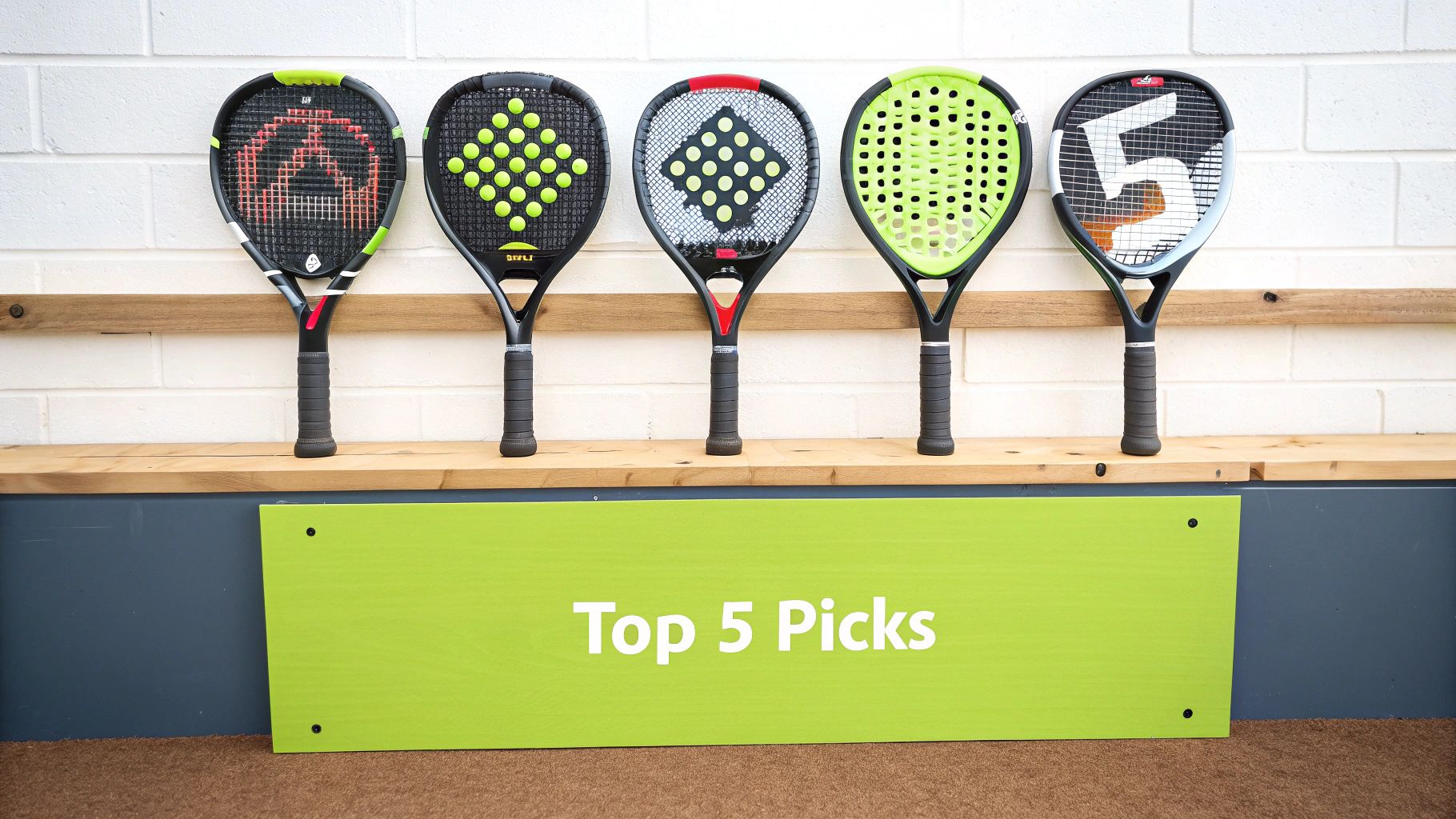
When you're new to padel, the last thing you want is a racket that feels like you're swinging a brick. An awkward or heavy racket doesn't just make the game less fun; it can lead to bad habits and even injuries. Two things really define how a racket feels in your hand: its total weight and where that weight sits, which we call its balance.
For anyone just starting out, I always recommend sticking to a weight between 350 and 370 grams. A racket in this lighter range is just so much easier to handle. You'll find your reactions are quicker at the net, and your arm won't feel so gassed after a long session. It lets you focus on your form instead of wrestling with your gear.
This lighter weight is also your best friend for avoiding nagging injuries like the dreaded "padel elbow." Your muscles are still getting used to the specific swings and impacts of the game, and a heavy racket puts a lot of extra strain on them. Staying in this weight range helps you play longer and more comfortably.
How Balance Changes Everything
Weight is only one part of the equation. Balance, or the racket's center of gravity, is just as important. It’s what makes two rackets of the same exact weight feel completely different. A racket can be head-heavy, head-light, or evenly balanced.
For beginners, a head-light balance is the way to go, no question. This means most of the weight is shifted down toward the handle. Think about holding a hammer: holding it by the handle is easy, but flip it around and try to swing it by the head—it feels clumsy and heavy. That’s the difference balance makes.
A head-light racket almost feels like it becomes part of your arm. It moves where you want it to move, giving you the freedom to swing with confidence and really focus on hitting the ball cleanly.
This is exactly why round rackets are the standard recommendation for new players. Their circular shape naturally creates a low balance point, giving you that nimble, easy-to-control feeling. When you're shopping for a beginner racket, a head-light balance is non-negotiable for getting the most control and comfort.
So, to boil it all down, here’s what you should be looking for:
- Total Weight: Keep it between 350g and 370g. This is the sweet spot for stability without the fatigue.
- Balance Point: Insist on a low or head-light balance. It’s the key to making the racket feel quick and easy to manage.
Nailing these two specs ensures your first racket is a true partner in learning the game. It will help you develop good technique, keep you off the injury list, and make your time on the court a whole lot more fun.
Comparing The Best Beginner Padel Rackets
Alright, you've got the basics down—shape, weight, and balance. Now comes the fun part: seeing how those elements play out in real rackets. We're going to put some of the top beginner-friendly models under the microscope to see what makes them tick.
Think of this as a hands-on comparison. We’ll look past the marketing jargon and get into how each racket actually feels on the court. Is it easy to swing? Does it help you keep the ball in play during a tricky defensive rally? Let's dive into three popular choices to see which one might be the right fit for your budding padel obsession.
Head Evo Sanyo: The Comfort King
The Head Evo Sanyo is a go-to for new players, and for good reason. It’s pretty much the textbook definition of a beginner racket: round shape, lightweight feel, and a soft foam core built for pure comfort. This thing is seriously forgiving.
Its large, centered sweet spot and soft interior do a fantastic job of soaking up vibrations, making it gentle on your arm. If you just want to focus on hitting consistent shots and avoid any arm soreness, the Evo Sanyo is an incredible starting point. It almost feels like it's helping you get the ball back over the net.
Key Differentiator: The comfort is where the Evo Sanyo truly shines. Anyone worried about tennis elbow or arm fatigue will immediately appreciate how well it dampens vibrations.
Bullpadel Indiga CTR: A Bit More Punch
For the naturally athletic beginner who’s picking up the game fast, the Bullpadel Indiga CTR strikes a great balance. It keeps that classic round shape and forgiving feel but introduces a slightly stiffer frame compared to ultra-soft models.
What does that mean for you? As your confidence grows and you start swinging a little harder, the Indiga CTR rewards you with a bit more pop and speed on your shots. It’s a great racket for someone who wants a tool that won't hold them back as they quickly move from a total novice to a more competent player.
Babolat Reflex: The Ultimate Safety Net
Babolat engineered the Reflex with one mission: to be as forgiving as humanly possible. They gave it an oversized round head, which creates one of the biggest sweet spots you’ll find in any beginner racket.
If you find yourself mishitting the ball often, the Reflex can feel like a game-changer. It’s also incredibly light, making it easy to maneuver and perfect your swing without feeling like you’re lugging a heavy tool around.
Finding The Sweet Spot In Beginner Rackets
When you start shopping, you’ll notice that most beginner rackets fall within a specific range of specs. This chart gives you a quick visual of what to expect in terms of weight, head size, and price.
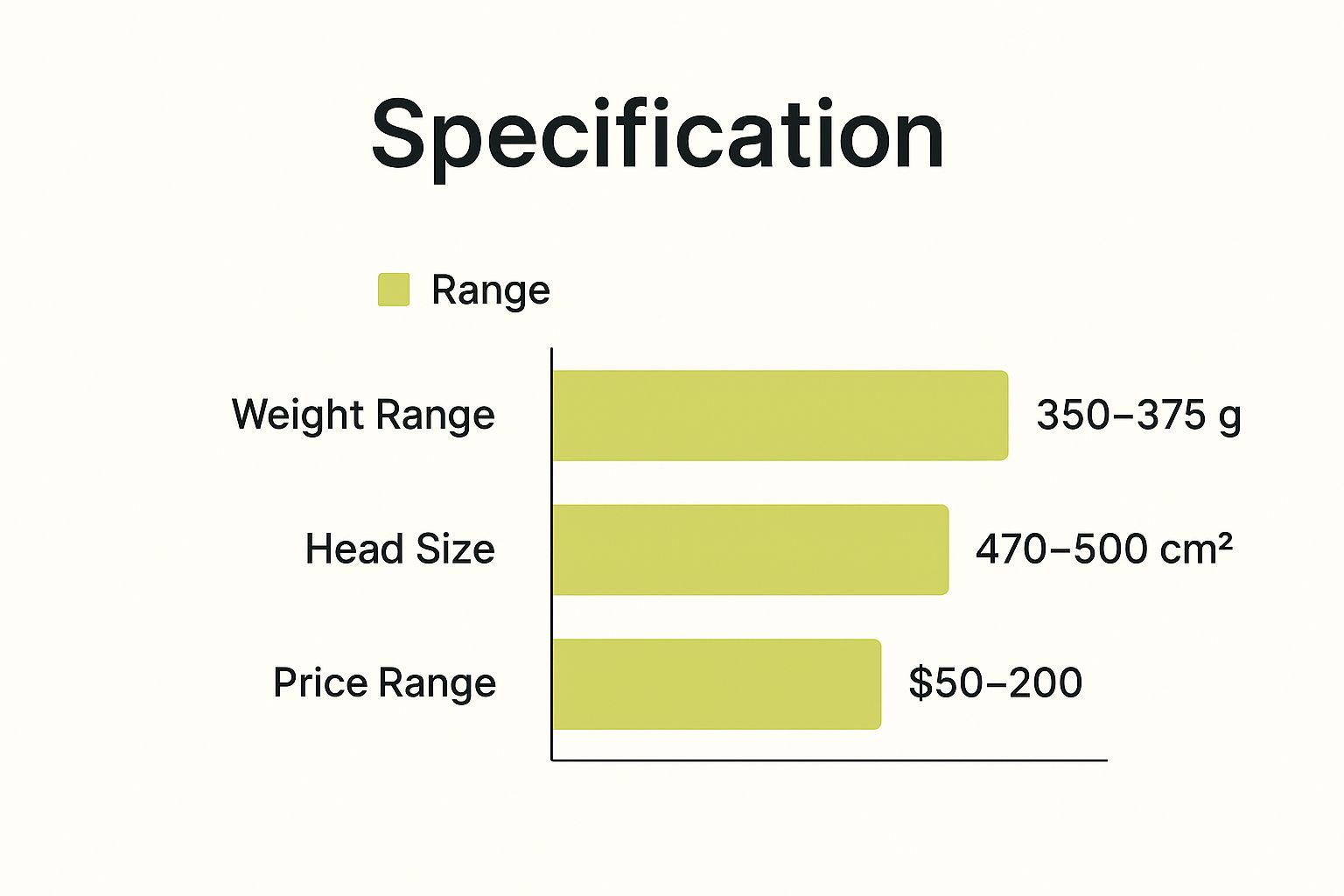
As you can see, the focus is squarely on manageable weights and generous head sizes to give you the most comfortable and forgiving experience possible.
Modern beginner rackets often use a smart mix of carbon fiber and fiberglass, keeping the average weight between a very manageable 350 and 370 grams. These materials have also made rackets more durable, boosting their lifespan by up to 25% compared to older designs.
Top Beginner Padel Racket Comparison
To help you see how these rackets stack up, here’s a detailed side-by-side look at their key specs. Remember to consider general tips for selecting the best equipment when making your final decision, focusing on what feels right for you. While these three are fantastic options, you can explore a broader range in our complete guide to the best padel racket.
| Racket Model | Shape | Weight (grams) | Core Material | Control Rating (1-10) | Comfort Rating (1-10) | Best For |
|---|---|---|---|---|---|---|
| Head Evo Sanyo | Round | 360-370 | Soft Foam | 9 | 10 | Players prioritizing comfort and consistency. |
| Bullpadel Indiga CTR | Round | 360-370 | Soft EVA | 8 | 8 | Athletic beginners wanting a bit more power. |
| Babolat Reflex | Round | 355-365 | Soft EVA | 10 | 9 | Maximum forgiveness on off-center hits. |
At the end of the day, the right choice really boils down to your own athletic background and what you want to achieve early on. Whether you’re all about comfort, want a little extra power, or just need as much help as you can get, there's a racket here that will set you up for success.
Matching a Racket to Your Athletic Profile
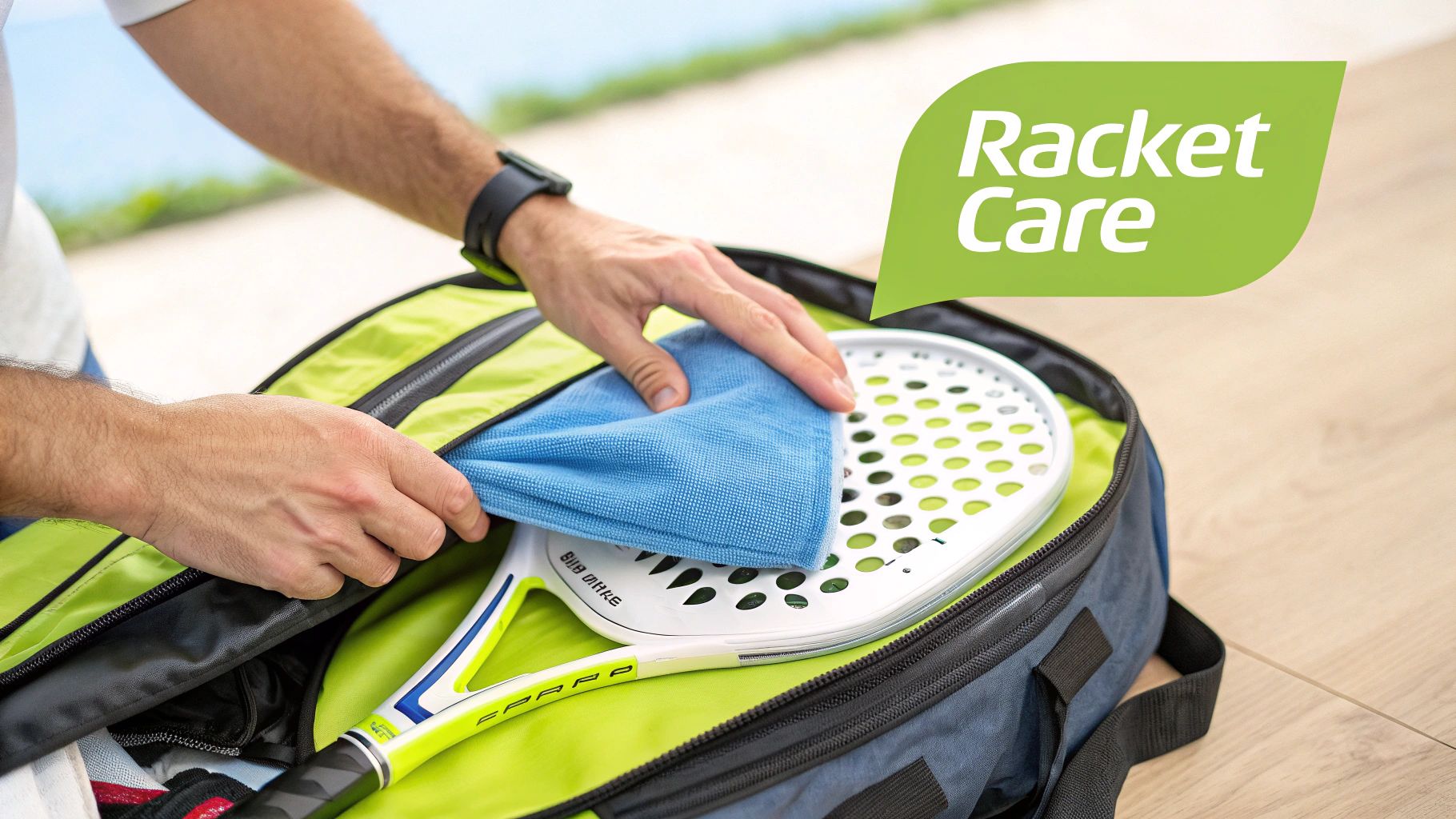
The label "beginner" can be a bit misleading because it covers a massive range of players. Your personal athletic history, how quickly you pick things up, and what you want to achieve on court all play a huge role in finding the right racket. There’s no single "best" choice; the goal is to find a racket that feels like an extension of what you're trying to do.
Think about it this way: are you the type of player who just wants to build a solid foundation, focusing on defense and consistency? Or do you have a background in tennis or squash, feeling ready to attack the ball right from the start? Knowing where you stand is the first step toward a smart purchase that will actually help you improve.
The Control-Focused Player
If your number one priority is simply getting the ball back over the net every single time, then consistency is everything. You're not worried about hitting winners just yet; you want to win points by being reliable and placing the ball well. For this style, the classic beginner setup is still the gold standard for a reason.
Look for a lightweight (350-365g), round racket with a soft fiberglass face. This combination gives you the biggest possible sweet spot and is incredibly comfortable to play with. It’s designed from the ground up to be forgiving, which means you’ll have a much smoother and more enjoyable time learning the proper technique.
Your first racket should build confidence, not frustration. For a control-minded beginner, a forgiving racket means you'll spend more time playing rallies and less time feeling discouraged by mishits.
The Fast-Track Athlete
What if you're coming from another racket sport and are picking up padel fast? You probably already have good hand-eye coordination and can generate your own power without much trouble. If that sounds like you, a standard, super-soft beginner racket might start feeling like a toy pretty quickly.
You can safely look at options with a bit more punch. Here are a couple of routes to consider:
- A Heavier Round Racket: You can stick with the forgiving round shape but choose a model that’s a bit heavier, somewhere in the 370-375 gram range. That extra weight will give you more stability and power on volleys and smashes without making control a nightmare.
- A Soft Teardrop Racket: If you're really itching for more power, a teardrop-shaped racket with a soft core is the perfect next step. It moves the sweet spot a little higher up the face, giving you more leverage for aggressive shots while still offering a good amount of forgiveness for your developing game.
Thankfully, manufacturers have caught on to this. They're now making a whole range of affordable rackets that meet different beginner ambitions. For instance, teardrop shapes that balance power and control are easier to find than ever, both online and in pro shops. If you're interested in the latest gear innovations, you can learn more about padel racket trends to see how the market is evolving.
In the end, it all comes down to being honest with yourself. Think about your athletic ability and the kind of game you want to play. Choosing a racket that truly fits your profile ensures your first big investment is one that helps you grow and keeps the game fun.
Common Mistakes to Avoid When Buying Your First Racket
Picking out your first padel racket is a huge milestone. It’s exciting! But it's also really easy to make a few common mistakes that can hinder your development, make the game less fun, and even cause an injury. Think of this as your final checklist to make sure you're getting the right tool for the job.
Don't Buy the Racket a Pro Uses
This is the number one mistake I see new players make. They see their favorite player, like Ale Galán or Juan Lebrón, smashing the ball and immediately want the same racket. Here's the hard truth: that's like learning to drive in a Formula 1 car.
Pro rackets are almost always heavy and diamond-shaped, engineered for pure power. They demand near-perfect technique and serious physical strength to manage. For a beginner, this kind of racket is a disaster waiting to happen. It has a tiny sweet spot, a head-heavy balance that causes arm strain (hello, padel elbow), and you’ll spend most of your time mishitting the ball instead of learning the fundamentals.
Prioritize Performance Over Looks
It's tempting. You see a racket with an awesome design or a color that pops, and you want it. But the paint job has absolutely zero effect on your game. A good-looking racket that's too heavy or the wrong shape will actively work against you on the court.
The best beginner rackets are designed with specific features that help you learn: a round shape for a big sweet spot, a light weight for maneuverability, and a soft core for comfort and control. Always, always put these technical specs ahead of aesthetics.
A racket that feels like an extension of your arm and helps you play better will bring you way more joy than one that just looks cool in your bag. Function first, always.
A Higher Price Tag Doesn't Mean Faster Progress
It’s a common misconception that spending more money will magically make you a better player. High-end rackets are expensive because they use advanced materials like high-modulus carbon fiber, which makes them stiff and powerful. That's fantastic for an advanced player who already generates their own power and needs that extra responsiveness for precision shots.
For a beginner, though, that stiffness is a huge negative. It gives you less feel for the ball and punishes you for every single off-center hit. You don’t need to spend a fortune to get a great racket. In fact, many of the best options for new players are incredibly affordable because they are built specifically for learning.
Your game improves with practice, coaching, and time on the court—not with a bigger price tag. A well-chosen, budget-friendly racket designed for beginners will serve you far better than a top-of-the-line pro model ever could. Avoiding these simple mistakes will set you up for a much more fun and successful start in padel.
For more in-depth guides, gear reviews, and the latest news from the court, visit us at Padel Rumors. Explore everything you need to know about the sport at https://padelrumors.pages.dev.


